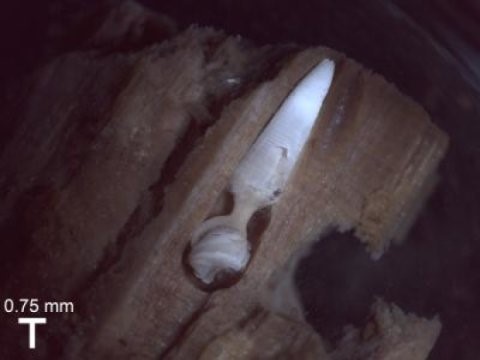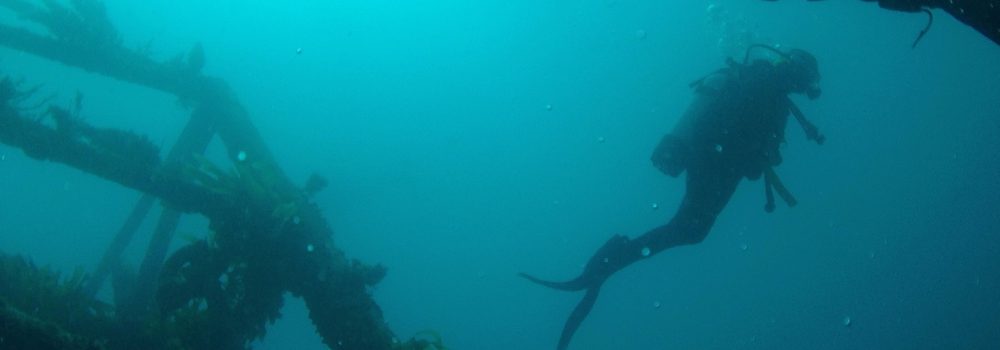
Credit: Jenna Judge
Wood that finds its way from rivers into the ocean can eventually sink to the sea floor, sometimes to great depths. There, tiny clams bore into the wood, and live the rest of their lives head down in the holes they make.
All clams are aquatic animals with two shells covering a soft body. They have long, tube-like organs called siphons that extend out from their shells, so they can pull in water and extract oxygen from it with their gills.
The clams digest wood with help from special bacteria in their gills. Along with termites and shipworms, they’re some of the only animals on Earth that can eat wood.
While the clams are tiny (some have shells smaller than a pea even as adults), they can settle in massive numbers, making the clams an important factor in the health of their deep-sea ecosystems. “We have no idea how much wood is at the bottom of the ocean, but there’s probably a lot more than we think”. “After big storms, we estimate that millions of tons of wood are washed out to sea. What if these clams weren’t there to help eat it? Think how long it would take the wood to rot. The clams contribute to the cycling of carbon, they play an integral part in making the wood into something that the other animals at the bottom of the ocean can get energy from. It could even affect sea level rise. It blows me away.”
